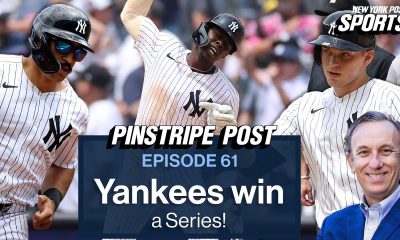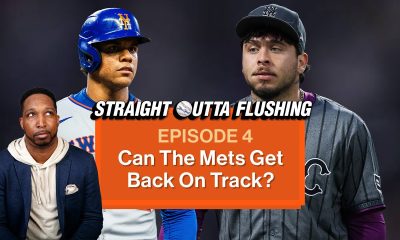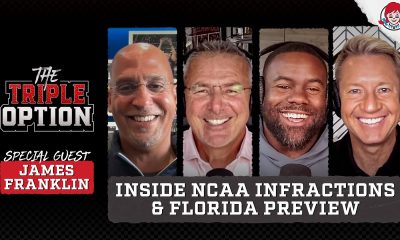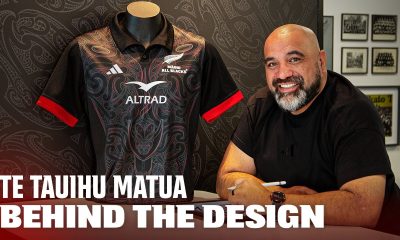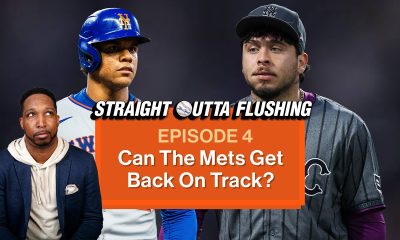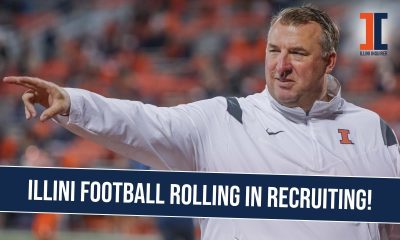NIL
Former U of I swimmer connects Top Tier athletes to local NIL opportunities
3
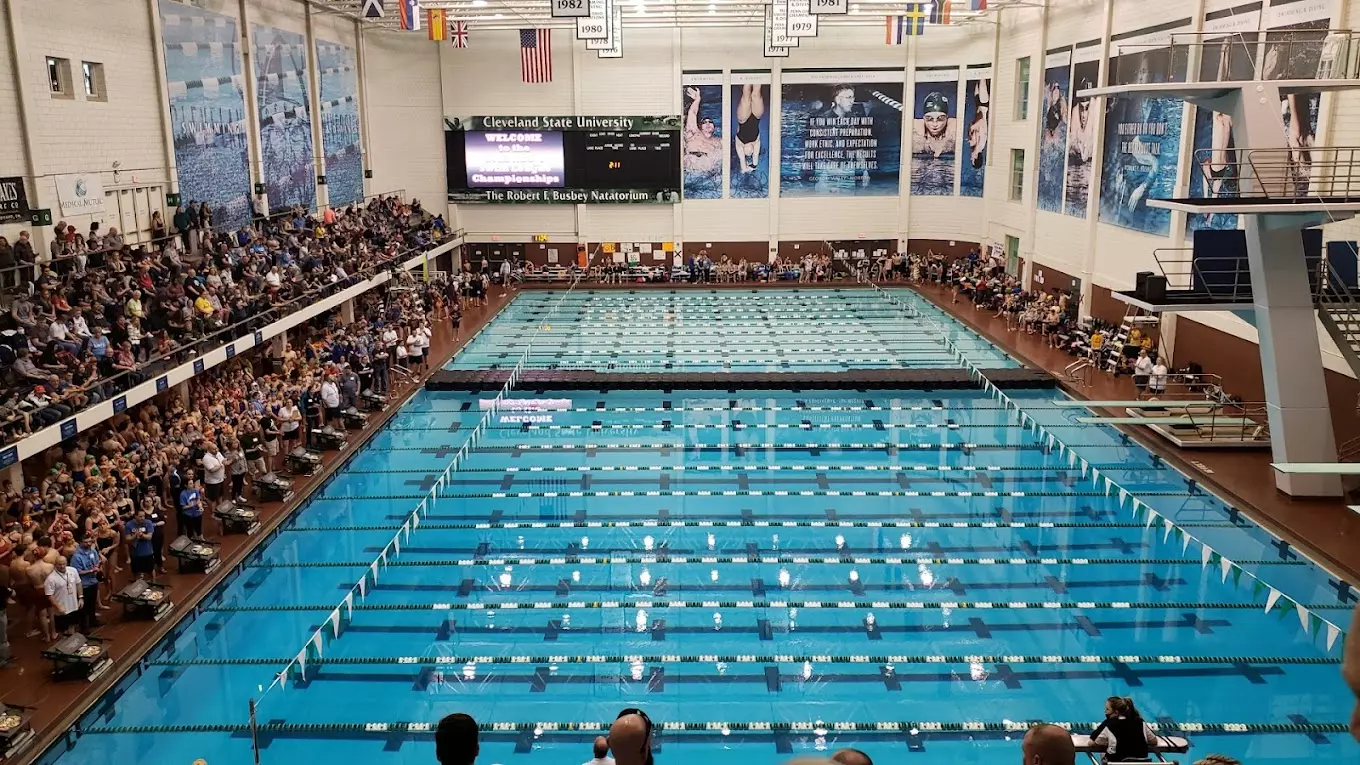
NIL
House v. NCAA Settlement Sparks New Age of Student-Athlete Compensation | BakerHostetler
Key Takeaways The NCAA and the Power Five conferences will pay $2.8 billion in damages to current and former student-athletes as a result of their settlement of the landmark antitrust litigation. Division I colleges and universities may now directly compensate student-athletes up to a $20.5 million cap for the 2025-2026 school year – opening the […]

Key Takeaways
- The NCAA and the Power Five conferences will pay $2.8 billion in damages to current and former student-athletes as a result of their settlement of the landmark antitrust litigation.
- Division I colleges and universities may now directly compensate student-athletes up to a $20.5 million cap for the 2025-2026 school year – opening the door for revenue sharing between athletic departments and their student-athletes.
- All noninstitutional, third-party name, image and likeness (NIL) agreements valued at $600 or more must be reported and independently reviewed for compliance with the terms of the settlement.
- The NCAA’s former limits on the number of scholarships designated for college sports teams have been eliminated and replaced with limits on the number of players a team may carry on its roster.
- Several legal questions remain unanswered concerning the administration of the terms of the settlement agreement, including whether future distributions of school revenue will comply with Title IX.
What was once inconceivable in the world of college sports has quickly become a reality. After years of litigation over its rules against athlete compensation, the NCAA has finally changed its tone. In a highly anticipated decision issued on June 6, Judge Claudia Wilken approved the final settlement agreement between the NCAA, the Power Five conferences and a class of former student-athletes in House v. NCAA. The settlement resolves a trio of consolidated cases that allege the NCAA’s scholarship limits and additional restraints on athlete compensation violate anticompetition laws. Now, for the first time in its history, the NCAA will permit colleges and universities to directly pay their student-athletes effective July 1.
$2.8 Billion in Damages To Be Paid by the NCAA and Power Five Conferences
The terms of the settlement agreement require the NCAA to pay more than $2.8 billion in damages to members of multiple student-athlete classes to the lawsuit, which will include all student-athletes who were eligible for Division I competitions at any time on or after June 15, 2016. An overwhelming majority of the damages paid to student-athletes will go to men’s football and basketball players.
Athlete Compensation up to a $20.5 Million Cap
The settlement also outlines the NCAA’s new athlete compensation framework spanning 10 years from the date of Wilken’s final approval. The NCAA will now allow schools to pay their student-athletes up to a $20.5 million cap (the equivalent of 22% of the average athletic department revenue for Power Five conference schools) for the 2025-2026 school year and eventually up to a $32 million cap in 2034-2035. The new rules permit schools to compensate athletes via revenue sharing from funds obtained through the school’s use of the athlete’s NIL, such as profits made from television contracts and events like the College Football Playoff.
Required Reporting and Independent Review for Third-Party NIL Agreements
In a significant change from historical practice, the NCAA will not act as the enforcing authority on the rules of the settlement. Instead, the Power Five conferences will establish an independent review process for third-party NIL deals worth more than $600, including contracts between student-athletes and school-affiliated entities or individuals (i.e., boosters and collectives), which must advance a valid business purpose within a reasonable range of compensation.
The newly established enforcement agency, the College Sports Commission,[1] will be responsible for policing compliance with the terms of the House settlement and evaluating whether reported deals meet fair market value standards. The terms of the settlement require athletes to report qualifying NIL partnerships that exceed the $600 threshold to the commission, and in the event that the proposed deal does not clear the commission’s screening process (which will be conducted by Deloitte, through use of its platform NIL Go), the parties to the deal may revise their agreement or submit the issue to a neutral arbitrator before initiating any legal action.
Scholarship Limits Out, Roster Limits In
The final piece of the House settlement eliminates the scholarship limits that were previously designated by the NCAA for each sport in Division I. Going forward, schools will be able to exercise far more discretion in their assignment of scholarship money to student-athletes across all athletic programs. However, in the interest of maintaining competitive balance, the NCAA will now place firm limits on the number of athletes that a team may carry on its roster.
The initially proposed roster limits were met with several objections from student-athletes concerned that current team members, in particular walk-on student-athletes, would lose their place on their respective rosters due to cuts. For example, football rosters will now shrink to a maximum of 105 athletes and many Division I football programs have previously carried as many as 140 players on the team.[2] In April, Wilken informed the parties that she would not approve the settlement unless the agreement was revised to address the roster limit concerns raised by objectors.
Though the final settlement agreement does not grandfather current players into their respective roster spots, it clarifies that current team members will not count toward their team’s total roster calculation for the rest of their eligibility period. In the event that a current player is cut from their team, the school will be required to honor the player’s scholarship.
Legal Challenges on the Horizon
The House settlement’s new athlete compensation model will provide student-athletes with ample opportunities to monetize their NIL, but there are still many open questions about the ways in which the settlement terms will be administered. Wilken addressed several legal concerns raised by objectors, but ultimately, her findings could not possibly address all the potential legal challenges that may arise in the future.
Notably, objectors to the settlement have already questioned whether the damages allocation and any back payments to former student-athletes may violate Title IX by unfairly favoring male athletes over female athletes,[3] whether state NIL laws that conflict with the settlement would be preempted by the agreement, whether the $20.5 million cap affects any potential collective bargaining rights that student-athletes may attempt to assert in future efforts to unionize, and whether student athletes may assert legal challenges to the compensation model in future efforts to be recognized as employees under the Fair Labor Standards Act.
[1] https://www.collegesportscommission.org/enforcement
[2] https://sports.yahoo.com/college-football/article/with-ncaa-house-settlement-hanging-in-balance-a-new-roster-limit-proposal-has-emerged-151555698.html
[3] https://frontofficesports.com/group-of-women-athletes-files-appeal-of-house-v-ncaa-settlement-approval/
[View source.]
NIL
NCAA inches closer to Mark Pope’s dream by expanding to 32 regular-season games in 2026
Starting in 2026-27, college basketball teams can add one more game to their schedules. If you just heard a whoop of joy from the Joe Craft Center, it’s because we’re slowly inching towards Mark Pope’s dream of 40 regular-season games. According to Matt Norlander, this afternoon, the NCAA Division I Council is expected to approve […]

Starting in 2026-27, college basketball teams can add one more game to their schedules. If you just heard a whoop of joy from the Joe Craft Center, it’s because we’re slowly inching towards Mark Pope’s dream of 40 regular-season games.
According to Matt Norlander, this afternoon, the NCAA Division I Council is expected to approve an increase from 31 to 32 regular-season games starting with the 2026-27 season. The Division I Men’s and Women’s Basketball Oversight Committees voted in favor of the change in March. Thirty-one games have been the max for regular-season schedules since 2006-07, when the format changed to 28 or 29 predetermined games plus three-game or two-game multi-team events. Starting in 2026, teams will have the option of adding one more regular-season game, which could take the total number of games played for teams in the NCAA championship game to 41.
Norlander says the NCAA and coaches hope the move will increase the number of quality non-conference games, the likelihood of some of those taking place in the middle of the conference schedule, and, of course, the potential for more revenue.
Multiple high-major coaches told CBS Sports in recent months that they are actively pursuing and hoping to play a nonconference game in the midst of the conference season moving forward, finding benefits in advance of postseason play in March.
The move to 32 is also, naturally, being done with money in mind. One more game will mean one more home and/or neutral-court opportunity for a lot of high-major programs, which are now looking for revenue in any way possible after the House case settlement ushered in revenue sharing for college athletes. Home gates at games bring in more revenue to be able to pay athletes. Sources around college athletics speculated that the increase to 32 games is just the first phase, and that by early-to-mid 2030s the regular season could go to 34 or 35 games prior to the start of conference tournament play.
Matt Norlander, CBS Sports
I have a feeling Mark Pope might be one of the coaches Norlander spoke to. Pope has long advocated expanding the regular-season schedule to 40 games. Thirty-two is a good start.
“I just think it’s time to expand our season out to a 40-game season,” Pope said in late February. “Like, it should be a 40-game season, especially with all the change and the turnover and the lack of continuity of teams, and also with revenue sharing and everything else, it doesn’t make any sense that we’re at a 31-game season. It makes no sense. And so I’m a massive advocate, maybe the only one in the world. But we need to expand the season to 40 games. Even for the guys that go on to be pros, it gives them a better sense.”
Pope is already taking advantage of the NCAA’s new rules allowing Division I teams to play exhibitions against one another. Purdue and Georgetown will come to Rupp Arena in October for preseason games. He can’t get quite as creative as he’d like due to Kentucky’s prior scheduling obligations, but this should help. In May, he even suggested a 35-game regular-season schedule, telling reporters he wants to make Kentucky’s slate as challenging and entertaining as possible.
“Imagine if we have four extra games that we can put on our schedule, where we go play a big-time neutral game, and set up a home-and-home, and do an in-state game that people here really care about, and just give us a little more flexibility in this deal,” Pope said. “Come on, man, let us do a home-and-home with Kansas. Let’s go. Why am I not going to Storrs to play a game? We need some more flexibility. And also, let us get to Maui.”
Baby steps. Also, someone should probably get a head start on those Mark Pope 41-0 jerseys/shirts.
NIL
Ryan Conroy Returns to Elon Baseball as Pitching Coach
Story Links Elon, N.C.- The Elon baseball program and head coach Mike Kennedy has announced the hiring of Ryan Conroy as the program’s new pitching coach. A former Phoenix pitcher from 2016-18, Conroy joins the Phoenix after five years in the Baltimore Orioles farm system and a stint with Cressey Sports Performance […]
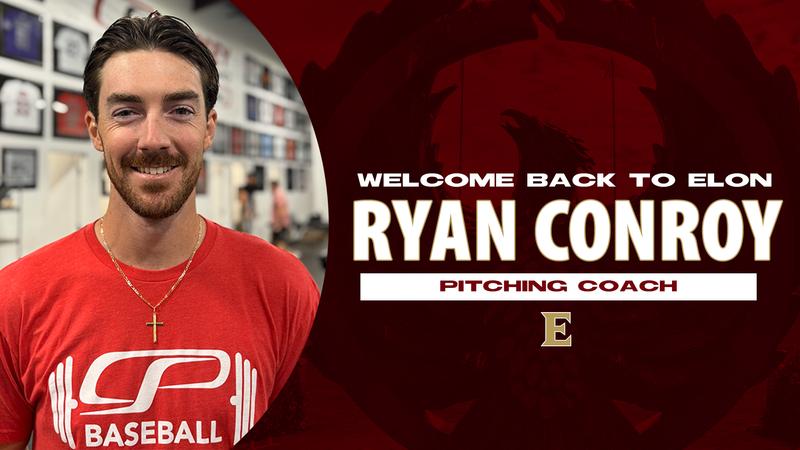
Elon, N.C.- The Elon baseball program and head coach Mike Kennedy has announced the hiring of Ryan Conroy as the program’s new pitching coach. A former Phoenix pitcher from 2016-18, Conroy joins the Phoenix after five years in the Baltimore Orioles farm system and a stint with Cressey Sports Performance as a pitching coach.
“I am ecstatic with this hire. Ryan IS Elon! He played here. Played at a high level. He loves to compete. He understands the culture and commitment it takes both on the field and in the classroom to be successful,” said head coach Mike Kennedy. “He understands how I tick, and he understands the passion I have for this great university. He cares deeply about the history of this program and those like him who poured everything they had into Elon Baseball. He worked tirelessly to be a great player and now will do the same in developing our pitching staff. Ryan is one of the best young pitching minds in baseball. The impact he will have on the development of our pitching staff will be immeasurable. If you are serious about development, there will not be a better fit. You will get better here!”
Conroy joins the Phoenix coaching staff after five seasons in pro baseball where he reached as high as AAA in the Orioles’ farm system. Conroy has spent the last year with Cressey Sports Performance as a pitching coach. During his time with Cressey, he worked directly with MLB All-Star and former Elon pitcher George Kirby. He also worked collaboratively with other pros such as Tanner Houck, Nick Pivetta and Jesus Luzardo.
During his time in the pros, he appeared in 98 games and compiled 226 professional innings. He most recently spent time with the Norfolk Tides, the Orioles AAA affiliate in 2023. Conroy was drafted by the Orioles in the eighth round of the 2018 MLB Draft after he spent three years in the maroon & gold. At Elon, he struck out 163 batters over three seasons in over 200 career innings pitched. Conroy, along with Kyle Brnovich and George Kirby, formed the Phoenix weekend rotation in 2018. The trio all spent time at the AAA-level or higher and were all drafted in the top eight rounds of the MLB Draft.
What they’re saying:
“Ryan knows firsthand what it takes to make the jump every college player dreams about, and his deep knowledge of biomechanics and how to maintain peak performance throughout a season makes him an absolute gold mine for any pitcher. As an alum, knowing Ryan bleeds maroon and gold and fully understands the expectations here, I couldn’t be more fired up! Huge day for Elon Baseball!” Mike Melillo – Elon Graduate / 2010 Milwaukee Brewers Draft Pick
“I’m very excited to have Ryan Conroy joining the Elon Baseball coaching staff. Ryan was not only a great player as a Phoenix but also excelled at the Professional Level. He has proven knowledge as a pitching coach at Cressey Sports Performance where he has had the opportunity to work with some of the best arms is all of baseball…including Elon alumni. I’m very excited to see him develop Elon’s current players and fortunate to have him join an already great coaching staff. Elon is gaining a great coach who will have a lasting impact on the University.” Kyle Brnovich – Elon Alum / Triple A Pitcher Baltimore Orioles
NIL
IMG Academy Is Now Preparing Athletes to Manage Potential NIL Riches Which Await on the College Level
IMG Academy prides itself on preparing its student-athletes for success on the next level and even beyond. In addition to elite training for their given sport, and the education to thrive as a college student, the Bradenton, Florida athletic powerhouse has begun prepping its students to meet the changing Name, Image and Likeness (NIL) landscape […]
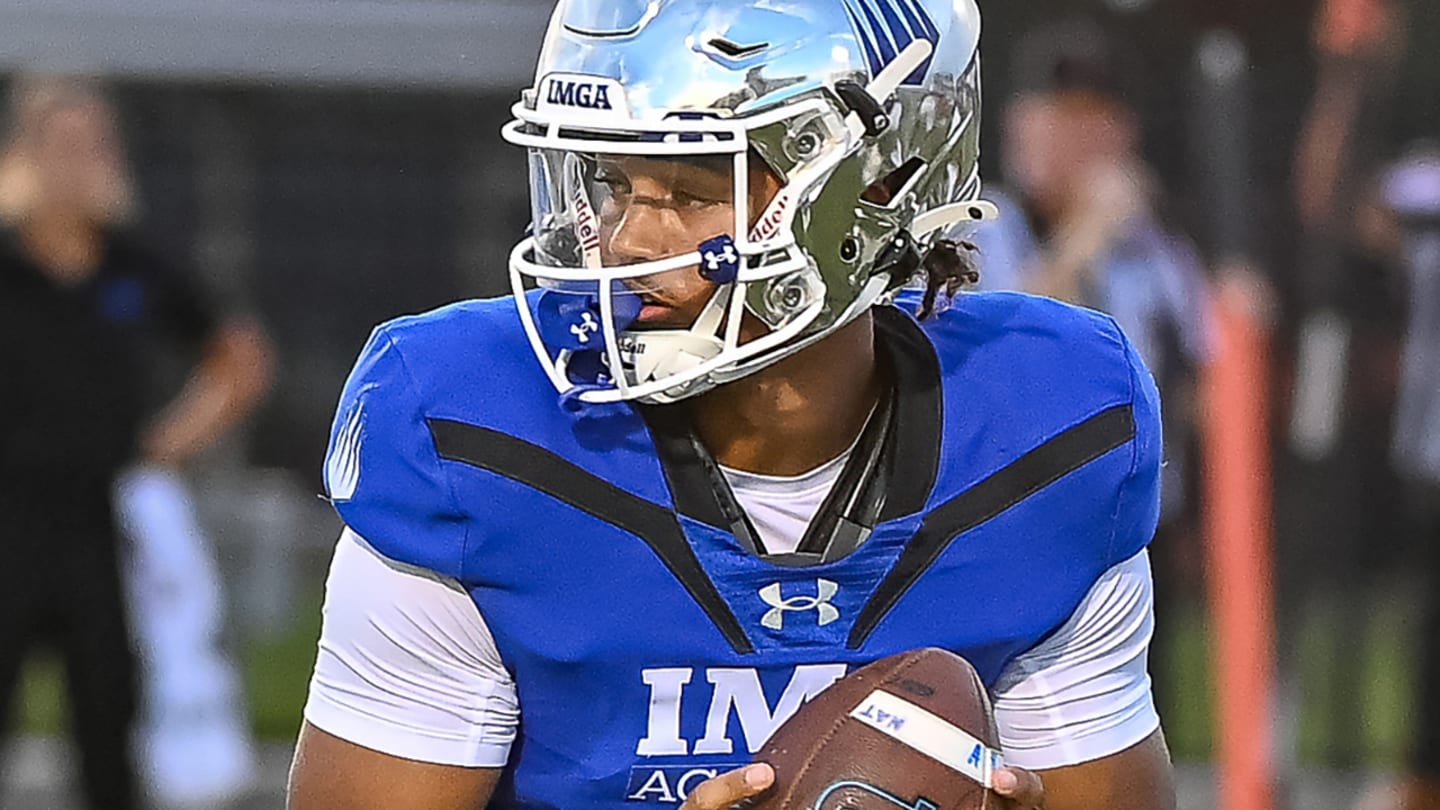
IMG Academy prides itself on preparing its student-athletes for success on the next level and even beyond. In addition to elite training for their given sport, and the education to thrive as a college student, the Bradenton, Florida athletic powerhouse has begun prepping its students to meet the changing Name, Image and Likeness (NIL) landscape of big time college sports.
Specifically, IMG has begun offering guidance on how NIL revenue sharing will impact the finances of the elite athletes, fortunate enough to receive those offers.
Until recently, NIL meant athletes had the right to negotiate marketing deals to profit from the use of their name, image and likeness. As of July 1, however, every Division 1 school will have the ability share up to $20.5 million of its annual revenues with its student athletes, in the form of direct payments.
This landmark change is a result of last year’s settlement between the NCAA and it’s conferences with plaintiffs in three different class action lawsuits. The settlement, which received final approval earlier this month, may result in a loss of college opportunities for some high school student-athletes. For elite athletes, similar to those spread throughout IMG’s sports teams, the opportunity to make life-altering earnings as a college athlete have never been greater.
“This moment in time for someone being at IMG Academy is exciting,” Kyle Brey, IMG’s director of football, recently told The Destin Log. “It’s not intimidating. This is a chance for us to flex a muscle that makes us different.
“We are the only high school on the planet that has the resources to be as far ahead of these conversations as we are. And when the landscape changes is when our resources really get challenged. And that’s when we can step up.”
According to the Destin Log report, IMG’s vice president of athletics, Brian Nash, said the school has been consulting with colleges in preparation for this moment, for more than a year. The school has also enlisted the services of outside professionals to provide advice for athletes transitioning to this new era of college athletics, while helping IMG administrators be better prepared to help their student athletes.
“If you don’t bring these people to campus and you don’t share the messaging with the kids, they’re definitely behind the eight-ball,” Nash said to the Destin Log. “To me, the kids were excited for them to come to campus because they knew that they were getting something that kids at other schools weren’t getting.”
NIL
More college stars staying put
INDIANAPOLIS (AP) — Will Wade’s work building N.C. State into an immediate winner included the pursuit of an entrant in the NBA draft, just in case he returned to college. It wasn’t a huge risk: With all the cash flowing in college, the number of early entrants to the NBA draft has continued to shrink. […]
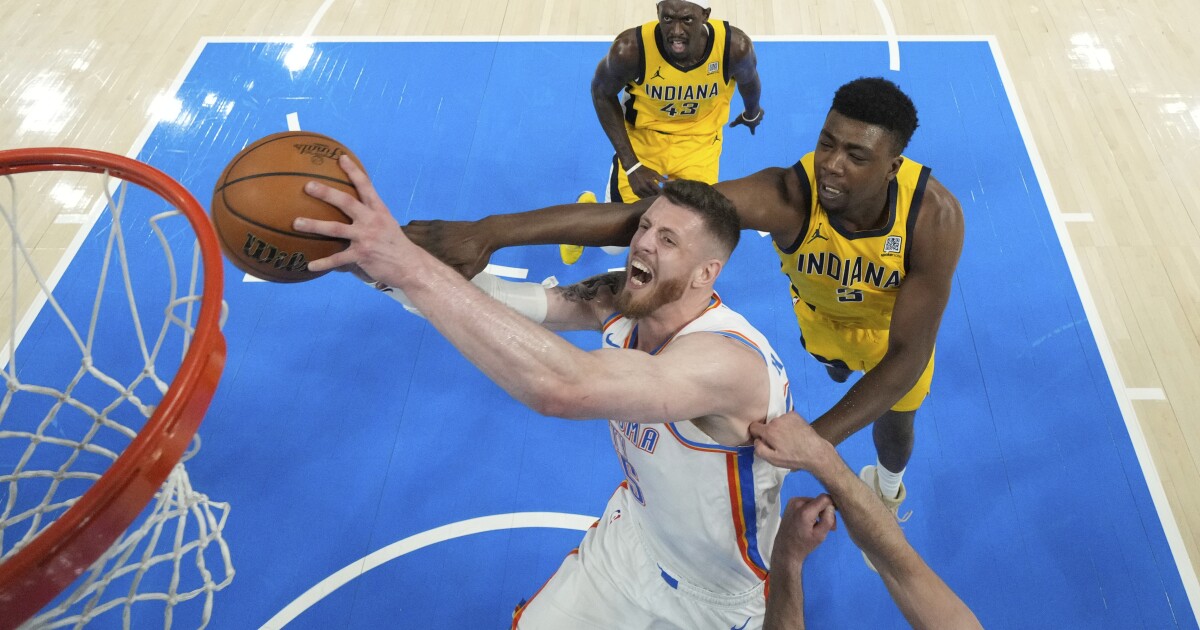
INDIANAPOLIS (AP) — Will Wade’s work building N.C. State into an immediate winner included the pursuit of an entrant in the NBA draft, just in case he returned to college.
It wasn’t a huge risk: With all the cash flowing in college, the number of early entrants to the NBA draft has continued to shrink. This year’s draft starts Wednesday night with its lowest total of those prospects in at least 10 years.
“Now you can play the long game a little bit more,” Wade told The Associated Press, referring to how college players can look at their futures. “Look, I can get paid the same I would get paid in the G League, the same I would get paid on a two-way (contract), some guys are getting first-round money.”
And more money is on the way.
It’s been four years since college athletes were permitted to profit off the use of their name, image and likeness (NIL), opening the door for athlete compensation that was once forbidden by NCAA rules. Next week, on July 1, marks the official start of revenue sharing where schools can begin directly paying athletes following the $2.8 billion House antitrust settlement.
For Wade, that led to signing Texas Tech’s Darrion Williams after 247sports’ fifth-ranked transfer withdrew from the draft.
“Basically now if you’re an early entry and you’re not a top-20, top-22 pick — where the money slots — you can pretty much make that in college,” the new Wolfpack coach said.
It’s all part of a seismic change that has rippled through college athletics since the pandemic, its impact touching the NBA. Players willing to “test the waters” in the draft before returning to school now have a lucrative option to consider against uncertain pro prospects.
And it shows in the numbers.
“With all the money that’s being thrown around in NIL, you’re having a lot less players put their names in,” Detroit Pistons president of basketball operations Trajan Langdon said. “You’re having pretty good players pulling their names out.”
Declining number of early entrants
This year’s drop is significant when compared to the years before anyone had heard of COVID-19. There was a spike of college players jumping into the draft in the pandemic’s aftermath, when they were granted a free eligibility year to temporarily make even a fourth-year senior an “early” entrant.
But those numbers had fallen as those five-year players cycled out of college basketball, and they’re now below pre-pandemic levels. That decline coincides with NIL’s July 2021 arrival, from athletes doing paid appearances or social-media endorsements to boosters forming collectives offering NIL packages amounting to de facto salaries.
As a result:
— Eighty-two players appeared on the NBA’s list of early entrants primarily from American colleges with a smattering of other teams, down 49% from 2024 (162) and nearly 47% compared to the four-year average from 2016-19 (153.5);
— Thirty-two remained after withdrawal deadlines, down from 62 last year and 72.0 from 2016-19;
— Adding international prospects, 109 players declared for the draft, down from 201 last year and 205.0 from 2016-19;
— And only 46 remained, down from 77 in 2024 and 83.8 from 2016-19.
More college players weighing options
Duke coach Jon Scheyer understands draft dynamics, both for no-doubt headliners and prospects facing less clarity. He sees college athlete compensation as a “legitimate gamechanger.”
“Hopefully it allows players to decide what’s truly best for their game,” Scheyer told the AP. “It allows them to analyze: ‘Am I actually ready for this or not?’ Where money doesn’t have to be the deciding factor. Because if money’s the deciding factor, that’s why you see kids not stick. The NBA’s cutthroat. It just is.”
The Blue Devils are expected to have three players selected in the first-round Wednesday, including presumptive No. 1 pick Cooper Flagg alongside top-10 prospects Kon Knueppel and Khaman Maluach. They also had players sorting through draft decisions.
Freshman Isaiah Evans — a slender wing with explosive scoring potential — withdrew instead of chasing first-round status through the draft process. Incoming transfer Cedric Coward from Washington State rapidly rose draft boards after the combine and remained in the draft.
“There’s no substituting the money you’re going to make if you’re a top-15, top-20 pick,” said Scheyer, entering Year 4 as successor to retired Hall of Famer Mike Krzyzewski. “But if you’re not solidified as a first-round pick, why risk it when you can have a solid year and a chance to go up or be in the same position the following season?”
College compensation is re-shaping the draft pool
Langdon, himself a former Duke first-rounder, sees that evolution, too.
His Pistons had their first playoff appearance since 2019, but lack a first-round selection and own a single pick in Thursday’s second round. Fewer candidates could make the already imperfect science of drafting even trickier in this new reality.
According to the NBA’s 2024-25 rookie scale, a player going midway through the first round would make roughly $3.5 million in first-year salary. That figure would drop to about $2.8 million at pick No. 20, $2.3 million at No. 25 and $2.1 million with the 30th and final first-round draftee.
A minimum first-year NBA salary? Roughly $1.2 million.
“These NIL packages are starting to get up to $3 to $4 to $5 to $6 million dollars,” Langdon said. “These guys are not going to put their name in to be the 25th pick, or even the 18th pick. They are going to go back to school in hopes of being a lottery pick next year. With that pool of players decreasing, it kind of decreases the odds of the level of player we get at No. 37, just the pure mathematics.”
Current NBA players offer insight
Indiana Pacers big man Thomas Bryant and Oklahoma City Thunder counterpart Isaiah Hartenstein, who both played in the seven-game NBA Finals that ended Sunday, illustrate Langdon’s point.
They were back-to-back second-rounders in 2017 (Bryant at 42, Hartenstein at 43), pushed down a draft board featuring early-entry college players in 33 of the 41 picks before them.
Bryant played two college seasons at Indiana before stints with five NBA teams, including Denver’s 2023 championship squad. Would the ability to make college money have changed his journey?
“To be honest, I see it from both sides,” Bryant said. “If you’re not going to get drafted, you understand that a kid needs money to live in college and everything. So, I understand where they’re coming from on that end.
“But for me, I took the chance. I bet on myself, and I believed in myself, and I worked to the very end. And the thing about me is that if I went down, I was going down swinging. I hang my hat on that. For some, it might not be the same case.”
The American-born Hartenstein moved to Germany at 11 and played in Lithuania before being drafted. As he put it: “I think everyone’s journey is different.”
“I think you should have the right people around you to kind of guide you,” said Hartenstein, a newly minted NBA champion. “I mean, I was lucky that my dad, who was a professional before, kind of guided me. Depending on your circumstances, it’s hard to turn down guaranteed money. If there’s an opportunity to get in a good situation in the NBA, you do that. But it’s a hard decision.”
College now can be more of an allure
At N.C. State, Wade’s pitch to Williams included a leading role and a shot at boosting his draft stock.
The 6-foot-6 junior averaged 15.1 points with multiple big NCAA Tournament performances as the Red Raiders reached the Elite Eight, nearly beating eventual champion Florida.
“He was most likely going to be a second-round draft pick, and his package here is better than probably he would’ve gotten as a second-round pick,” Wade said, adding: “We certainly talked about that. We went over that. We went over the math of everything. We went over the plan on how to accomplish that.”
That’s not to say it’s easy at the college level in this new landscape. Roster management is tricky, including a balancing act of maintaining financial resources to potentially land one player while risking missing out on others.
“It’s the way life works, it’s the way it should work,” Wade said. “If there’s no risk, there’s no reward. The riskiest players, in terms of waiting on the money and waiting them out, are the best players. That’s why they’re in the draft process. We’re not going to be scared of that.”
Nor should he, not with the allure of campus life these days.
NIL
Jay Johnson believes LSU made College World Series thanks to roster of ‘future Major League players’
Two out of the last three national championships call Baton Rouge home. LSU once again reached college baseball’s mountaintop on Sunday, taking down Coastal Carolina in two games. Jay Johnson is building something special at LSU, potentially being on the cusp of a dynasty. LSU has put together special rosters in Johnson’s tenure, even in […]

Two out of the last three national championships call Baton Rouge home. LSU once again reached college baseball’s mountaintop on Sunday, taking down Coastal Carolina in two games. Jay Johnson is building something special at LSU, potentially being on the cusp of a dynasty.
LSU has put together special rosters in Johnson’s tenure, even in years where expectations fell short. He believes one aspect of team building trumps all — making sure future Major League talent is present.
“I don’t think you can get to Omaha anymore, even, unless you have future Major League players on your roster,” Johnson said Monday on The Paul Finebaum Show. “And our team certainly does. Had the No. 1 overall pick in Paul Skenes and very well may have the No. 1 pick again this year with Kade Anderson.”
Going back to the 2023 team, where Johnson mentioned Skenes as the No. 1 overall pick. Outfielder Dylan Crews heard his name called one pick later by the Washington Nationals. Pitcher Ty Floyd was a first-round Competitive Balance Round A selection as well of the Cincinnati Reds. In total, 13 Tigers were taken in the 2023 MLB Draft after winning the national championship.
As for how many LSU players will hear their name in the upcoming 2025 MLB Draft is yet to be seen. Anderson does have a fantastic chance of being the top pick, once again with the Nationals. His Game 1 performance against Coastal Carolina only strengthens the cause thanks to a 130-pitch complete game shutout.
In the latest MLB Mock Draft from ESPN, only right-handed pitcher Anthony Eyanson features inside the top 40 besides Anderson. This year’s LSU bunch might have some catching up to do if there is going to be any kind of competition with the 2023 squad.
But Johnson’s overall point remains true. LSU made runs to Omaha due to the talent on their roster. And then, once at the College World Series, those players performed at the highest level and helped the program win a national championship.
Now, the goal to replace said talent will be the challenge for Johnson. Not many programs recruit at as high a level, both in the high school ranks and out of the NCAA transfer portal, as LSU. A place where the goal every single season is to make the CWS, Johnson has a good bit of Major League talent to find ahead of the 2026 season.
-

 Motorsports2 weeks ago
Motorsports2 weeks agoNASCAR Weekend Preview: Autódromo Hermanos Rodríguez
-

 NIL3 weeks ago
NIL3 weeks agoPatrick Mahomes in OKC for WCWS, praises NiJaree Canady and Texas Tech
-

 NIL3 weeks ago
NIL3 weeks agoGreg Sankey fires jab at obstruction rule after controversial WCWS call in Texas vs. Texas Tech
-

 NIL3 weeks ago
NIL3 weeks agoReport
-

 Motorsports2 weeks ago
Motorsports2 weeks agoNASCAR Through the Gears: Denny Hamlin has gas, a border needs crossing, and yes, that’s a Hemi
-

 NIL3 weeks ago
NIL3 weeks agoTexas Tech Pitcher’s $1M Deal Proves What’s Possible For Women
-

 Motorsports3 weeks ago
Motorsports3 weeks agoChase Elliott’s $12.6 billion backer made major Kyle Larson decision – Motorsport – Sports
-
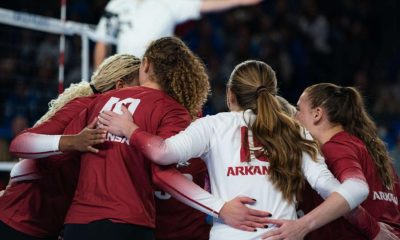
 Sports3 weeks ago
Sports3 weeks agoArkansas Volleyball reveals 2025 schedule dates
-

 Health3 weeks ago
Health3 weeks agoBold and unapologetic
-

 NIL3 weeks ago
NIL3 weeks agoMahomes lauds NiJaree Canady, Texas Tech softball at WCWS finals







